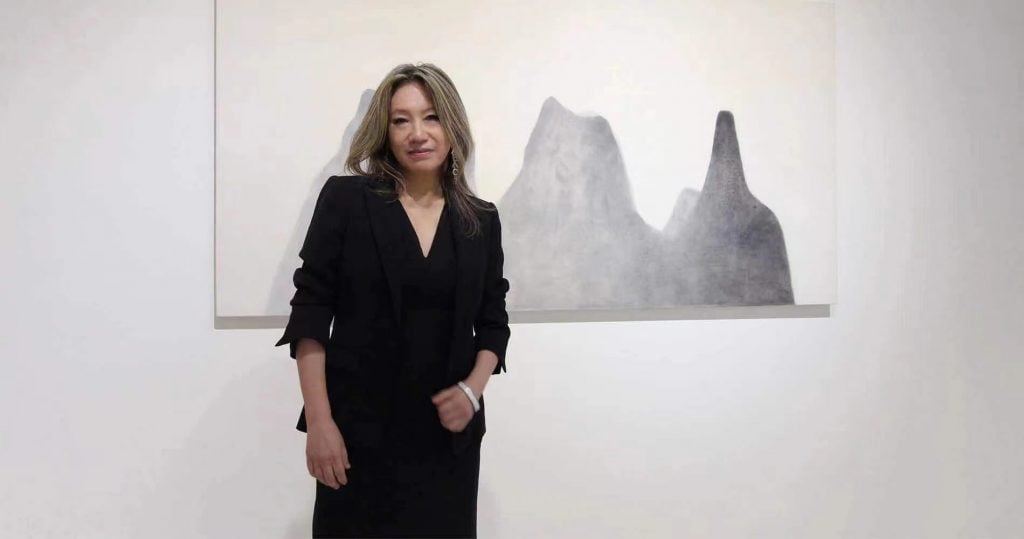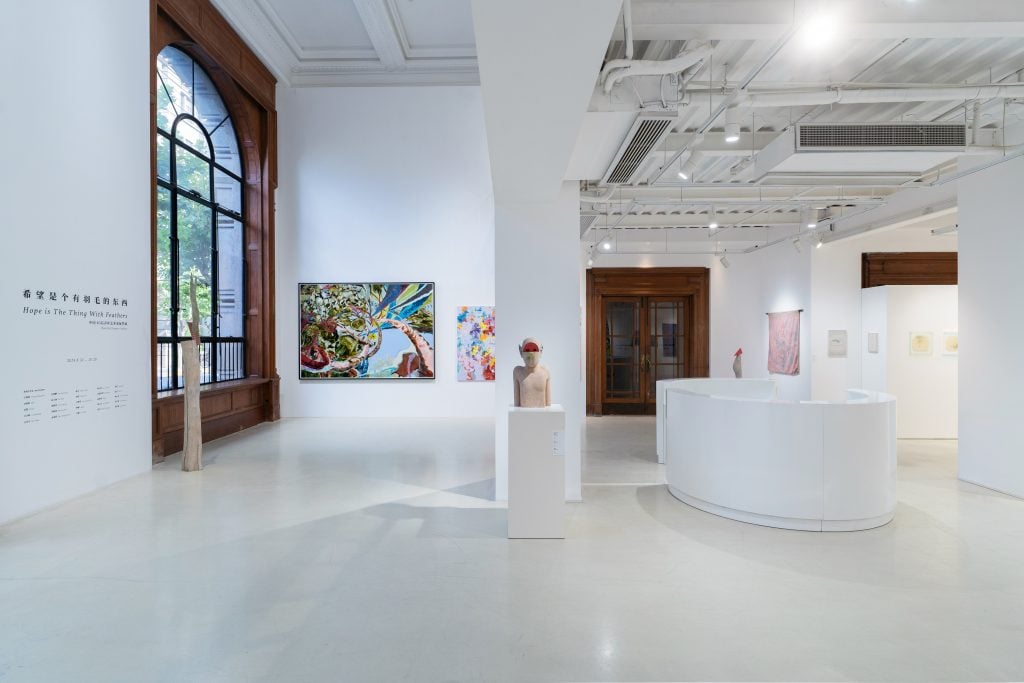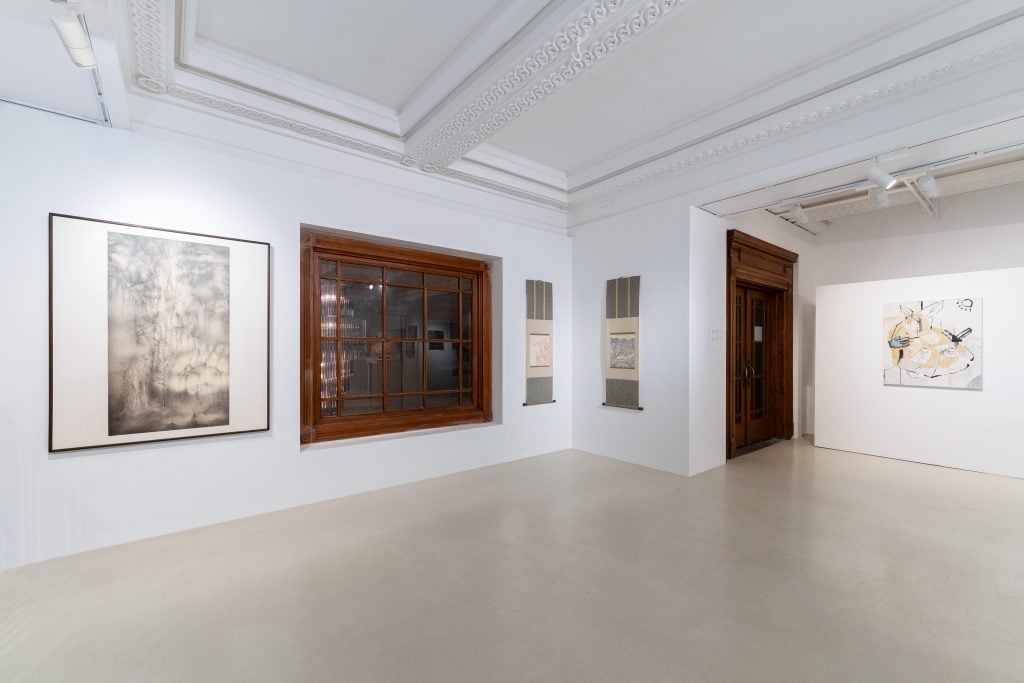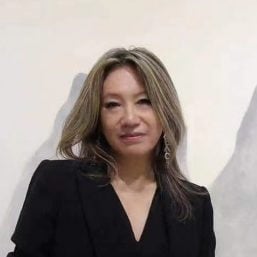The View From is excerpted from The Asia Pivot, Artnet Pro’s biweekly members-only newsletter providing mission-critical analysis, insights, and exclusive intelligence on developments in Asia’s art markets, with a focus on business opportunities and challenges. Subscribe here to receive it directly to your inbox.
Elsa Wang is the founder of Bluerider Art, a gallery with spaces in Taipei, Shanghai, and London. Before entering the art business in 2013, she was a co-founder of an IT company in Taiwan. She is also an avid collector, a dancer, and a photographer. Wang serves as board director of a publicly listed IT company. She firmly believes that both art and science stem from creativity and share a common pursuit of universal truths.
I feel that the past few years of the pandemic have marked a turning point. Previously, Hong Kong served as the gateway city to the international art world within the Asian region. However, after the pandemic, my perspective on its positioning has changed. We used to visit Hong Kong multiple times a year, especially during art fairs, but this has shifted somewhat since the pandemic. Participating in ART021 Hong Kong marks our first return to the city for an art fair since the pandemic. I’m not sure how our previous collectors are doing at the moment; I know that some of them no longer live in Hong Kong.

Elsa Wang, founder of Bluerider Art
I have participated in ART021’s Shenzhen fair twice, but this time it has moved to Hong Kong, and I naturally followed. My participation this time is also to understand what the future of the Greater Bay Area will be like.
I feel that after the pandemic, aside from the presence of international blue-chip galleries, Hong Kong seems to have become more regionally focused. In the past, we had collectors from almost the entire Asian region in Hong Kong, but now many more art fairs have emerged across Asia. It feels like these fairs have diluted the number of collectors across Asia. If some art fairs continue to emphasize blue-chip galleries, and one flies to different art fairs only to see the same galleries, I don’t think collectors necessarily need to travel as much.
We have a gallery in Shanghai, so it doesn’t seem entirely necessary to participate in mega-scale art fairs like Art Basel in Hong Kong. I’ve become less interested in those super-sized fairs that were prevalent before the pandemic. Additionally, during those times, there were over 200 galleries, each with dozens of artworks, and satellite fairs to add on top of that, meaning that collectors could be viewing tens of thousands of artworks. Since we are not a blue-chip gallery, there’s a good chance we could be overlooked.

Group exhibition, “Hope is The Thing With Feathers,” at Bluerider ART Shanghai space
For an art fair in Asia, the key is to determine its positioning—whether it’s attracting local collectors or foreign collectors (outside of Asia). The fact is it is very difficult to attract foreign collectors. For a local gallery like ours, the customer base tends to change relatively little, and many are already familiar with us. Additionally, when considering whether to return to Seoul for an art fair, there are very practical considerations, such as customs duties and language barriers.
Language has been one of the bigger issues we’ve encountered in the past, as it directly impacts our communication with new local collectors. If Seoul can address these issues, it would indeed be a promising market. However, the liveliness of an art fair doesn’t equate to sales. Of course, if it can be both lively and profitable, like Art Basel Miami Beach, that’s ideal. So, from an Asian perspective, liveliness and purchasing are two different things. Therefore, I believe many local Asian art fairs still require more time for observation and development.

The group exhibition “Hope is The Thing With Feathers” at Bluerider ART’s Shanghai space.
Our gallery now operates four spaces across three cities, representing around 50 European and American artists, most of whom are over 50 years old. This year, a particularly noteworthy project for us has been an open-call exhibition for young Chinese artists born after 1985. Before 2018, most of our focus was on collaborating with foreign artists, but we also wanted to contribute to the local scene. These artists are still under 40 today, with work that is relatively early in their careers. In just a month and a half, we received 500 submissions, 2,000 submissions in total, with many surprising discoveries. We selected 48 works from 25 artists.
We found that many of the artists are highly educated, with some even pursuing doctoral degrees. In terms of media, 16 of the 48 works are ink paintings, and more than 10 others are oil or acrylic paintings. My impression is that painting is predominant, and the technical level is quite high. Thematically, most works focus on two main areas, humanity and nature, and many are related to the internet era. I feel that their thematic content is quite different from that of the previous generation of artists. In the future, I hope to bring these new-generation Chinese artists to Taipei and London.
—As told to Cathy Fan
_02-1024x683.jpg)








